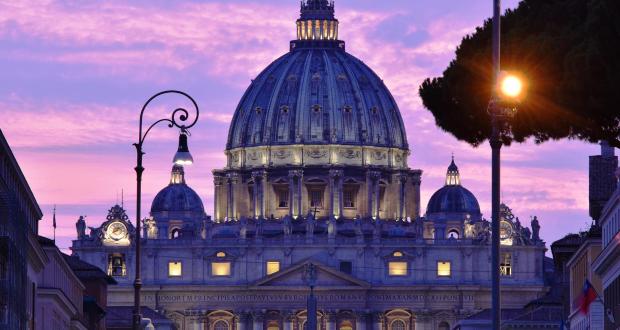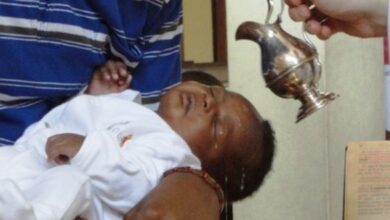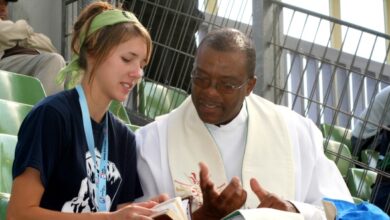Catholic Answers To Questions About Catholicism And The Catholic Church

I Believe In The Holy Catholic Church (ccc 748 – 750)
“Christ is the light of humanity; and it is, accordingly, the heart-felt desire of this sacred Council, being gathered together in the Holy Spirit, that, by proclaiming his Gospel to every creature, it may bring to all men that light of Christ which shines out visibly from the Church.” These words open the Second Vatican Council’s Dogmatic Constitution on the Church. By choosing this starting point, the Council demonstrates that the article of faith about the Church depends entirely on the articles concerning Christ Jesus. the Church has no other light than Christ’s; according to a favorite image of the Church Fathers, the Church is like the moon, all its light reflected from the sun.
The article concerning the Church also depends entirely on the article about the Holy Spirit, which immediately precedes it. “Indeed, having shown that the Spirit is the source and giver of all holiness, we now confess that it is he who has endowed the Church with holiness.” The Church is, in a phrase used by the Fathers, the place “where the Spirit flourishes.”
To believe that the Church is “holy” and “catholic,” and that she is “one” and “apostolic” (as the Nicene Creed adds), is inseparable from belief in God, the Father, the Son, and the Holy Spirit. In the Apostles’ Creed we profess “one Holy Church” (Credo . . . Ecclesiam), and not to believe in the Church, so as not to confuse God with his works and to attribute clearly to God’s goodness all the gifts he has bestowed on his Church.
The Church’s Origin, Foundation and Mission (ccc 758 – 769)
We begin our investigation of the Church’s mystery by meditating on her origin in the Holy Trinity’s plan and her progressive realization in history.
A plan born in the Father’s heart
“The eternal Father, in accordance with the utterly gratuitous and mysterious design of his wisdom and goodness, created the whole universe and chose to raise up men to share in his own divine life,” to which he calls all men in his Son. “The Father . . . determined to call together in a holy Church those who should believe in Christ.” This “family of God” is gradually formed and takes shape during the stages of human history, in keeping with the Father’s plan. In fact, “already present in figure at the beginning of the world, this Church was prepared in marvellous fashion in the history of the people of Israel and the old Advance. Established in this last age of the world and made manifest in the outpouring of the Spirit, it will be brought to glorious completion at the end of time.”
The Church – foreshadowed from the world’s beginning
Christians of the first centuries said, “The world was created for the sake of the Church.” God created the world for the sake of communion with his divine life, a communion brought about by the “convocation” of men in Christ, and this “convocation” is the Church. the Church is the goal of all things, and God permitted such painful upheavals as the angels’ fall and man’s sin only as occasions and means for displaying all the power of his arm and the whole measure of the love he wanted to give the world:
Just as God’s will is creation and is called “the world,” so his intention is the salvation of men, and it is called “the Church.”
The Church – prepared for in the Old Covenant
The gathering together of the People of God began at the moment when sin destroyed the communion of men with God, and that of men among themselves. the gathering together of the Church is, as it were, God’s reaction to the chaos provoked by sin. This reunification is achieved secretly in the heart of all peoples: “In every nation anyone who fears him and does what is right is acceptable” to God.
The remote preparation for this gathering together of the People of God begins when he calls Abraham and promises that he will become the father of a great people. Its immediate preparation begins with Israel’s election as the People of God. By this election, Israel is to be the sign of the future gathering of All nations.8 But the prophets accuse Israel of breaking the covenant and behaving like a prostitute. They announce a new and eternal covenant. “Christ instituted this New Covenant.”
The Church – instituted by Christ Jesus
It was the Son’s task to accomplish the Father’s plan of salvation in the fullness of time. Its accomplishment was the reason for his being sent. “The Lord Jesus inaugurated his Church by preaching the Good News, that is, the coming of the Reign of God, promised over the ages in the scriptures.” To fulfill the Father’s will, Christ ushered in the Kingdom of heaven on earth. the Church “is the Reign of Christ already present in mystery.”
“This Kingdom shines out before men in the word, in the works and in the presence of Christ.” To welcome Jesus’ word is to welcome “the Kingdom itself.” The seed and beginning of the Kingdom are the “little flock” of those whom Jesus came to gather around him, the flock whose shepherd he is. They form Jesus’ true family. To those whom he thus gathered around him, he taught a new “way of acting” and a prayer of their own.
The Lord Jesus endowed his community with a structure that will remain until the Kingdom is fully achieved. Before all else there is the choice of the Twelve with Peter as their head. Representing the twelve tribes of Israel, they are the foundation stones of the new Jerusalem. The Twelve and the other disciples share in Christ’s mission and his power, but also in his lot. By all his actions, Christ prepares and builds his Church.
The Church is born primarily of Christ’s total self-giving for our salvation, anticipated in the institution of the Eucharist and fulfilled on the cross. “The origin and growth of the Church are symbolized by the blood and water which flowed from the open side of the crucified Jesus.” “For it was from the side of Christ as he slept the sleep of death upon the cross that there came forth the ‘wondrous sacrament of the whole Church.'” As Eve was formed from the sleeping Adam’s side, so the Church was born from the pierced heart of Christ hanging dead on the cross.
The Church – revealed by the Holy Spirit
“When the work which the Father gave the Son to do on earth was accomplished, the Holy Spirit was sent on the day of Pentecost in order that he might continually sanctify the Church.” Then “the Church was openly displayed to the crowds and the spread of the Gospel among the nations, through preaching, was begun.” As the “convocation” of all men for salvation, the Church in her very nature is missionary, sent by Christ to all the nations to make disciples of them.
So that she can fulfill her mission, the Holy Spirit “bestows upon [the Church] varied hierarchic and charismatic gifts, and in this way directs her.” “Henceforward the Church, endowed with the gifts of her founder and faithfully observing his precepts of charity, humility and self-denial, receives the mission of proclaiming and establishing among all peoples the Kingdom of Christ and of God, and she is on earth the seed and the beginning of that kingdom.”
The Church – perfected in glory
“The Church . . . will receive its perfection only in the glory of heaven,” at the time of Christ’s glorious return. Until that day, “the Church progresses on her pilgrimage amidst this world’s persecutions and God’s consolations.” Here below she knows that she is in exile far from the Lord, and longs for the full coming of the Kingdom, when she will “be united in glory with her king.” The Church, and through her the world, will not be perfected in glory without great trials. Only then will “all the just from the time of Adam, ‘from Abel, the just one, to the last of the elect,’ . . . be gathered together in the universal Church in the Father’s presence.”






